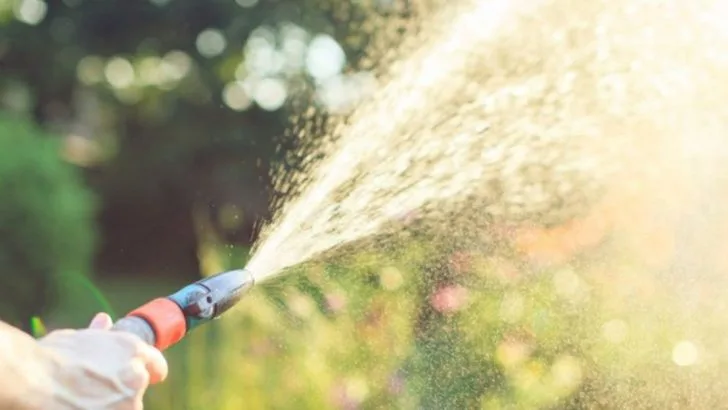Most people kill their plants with kindness—and a hose. It starts with good intentions. A little splash here, a heavy soak there. You think you’re saving them from thirst. What you’re actually doing? Drowning their roots and inviting rot to move in rent-free. Overwatering is the silent assassin of home gardens. It creeps in under the disguise of care and ends with wilted leaves, yellow stems, and heartbreak. And the worst part? You followed “the rules.” Well, some of those rules are garbage. Old advice, passed around like garden gossip, doing more harm than heatwaves ever could. If your watering routine feels holy but your plants keep dying—this list is your wake-up call. Let’s dig into the mistakes, toss the myths, and finally water with some sense.
Overwatering
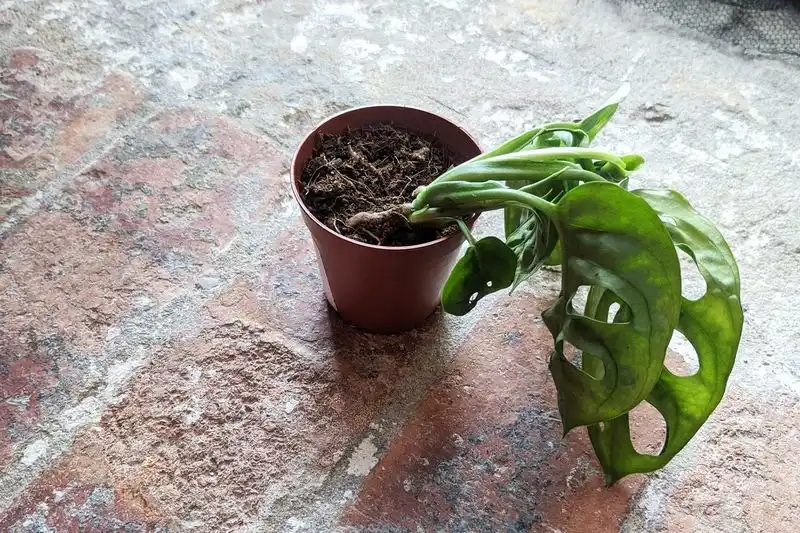
Overwatering is like drowning your plant in kindness. With roots constantly submerged, they suffocate, unable to access needed oxygen. This leads to root rot, where the roots decay and no longer support the plant.
Imagine trying to breathe underwater without coming up for air; that’s how your plant feels. Instead, allow the soil to dry out between waterings.
For most indoor plants, check the top inch of soil: if it’s dry, it’s time to water. This simple change can revive your plant’s vitality, ensuring it flourishes rather than flounders.
Watering at Night
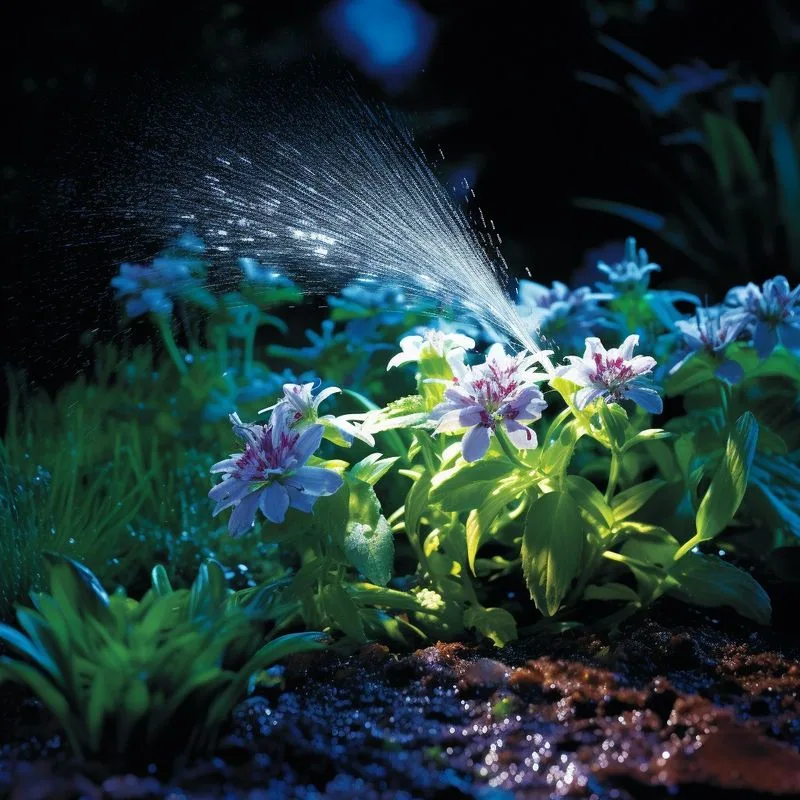
Watering at night may seem convenient, but it invites problems. Excess moisture on leaves can lead to fungal diseases as the water doesn’t evaporate in cooler temperatures.
This damp environment is a breeding ground for fungi, harming your plants. Instead, opt for early morning watering.
This timing allows water to reach the roots while the sun helps dry the foliage.
Such a practice not only keeps diseases at bay but also ensures plants have ample water to face the day’s heat.
Ignoring Plant Types
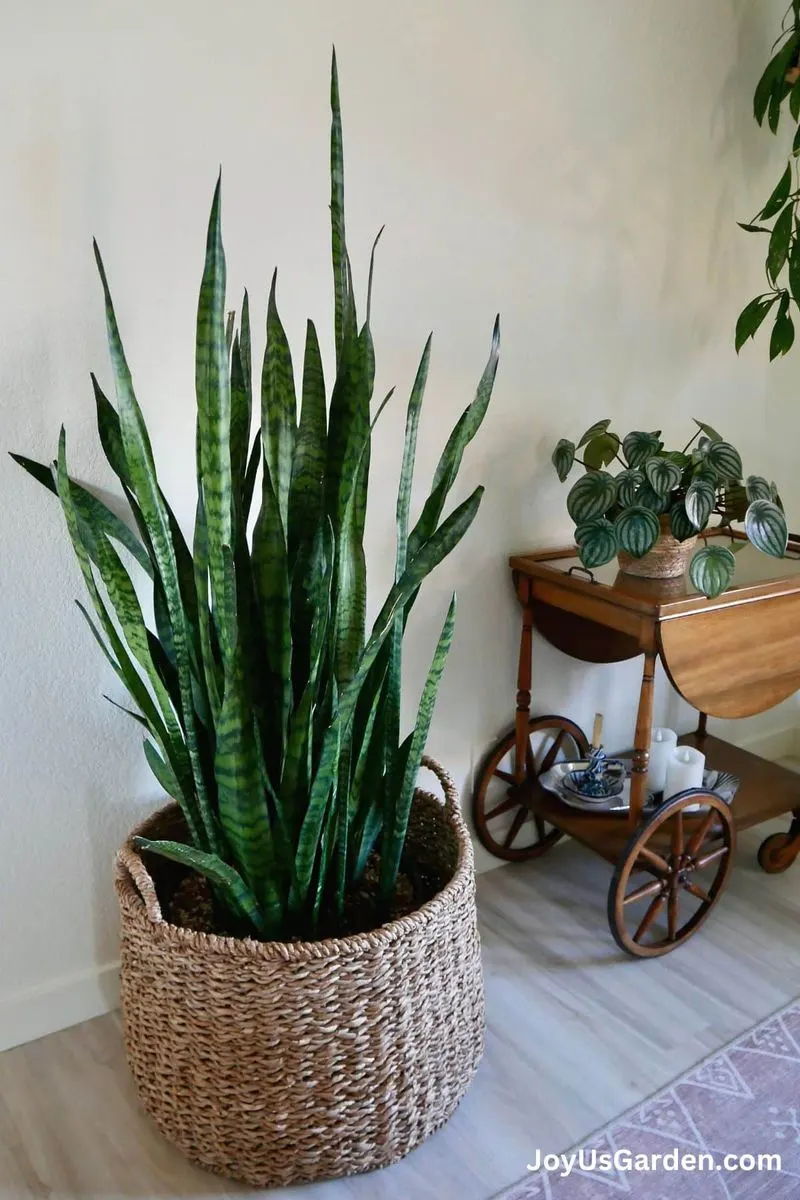
Not all plants are created equal in their thirst. Watering succulents like you would a fern can be disastrous. Succulents require less frequent watering, preferring dry conditions, while ferns thrive in moist environments.
Recognizing these differences is crucial.
Research the specific needs of each plant in your care. Tailoring your watering routine to fit these unique requirements can prevent over or under-watering, fostering healthy growth.
Embrace this personalized approach, and watch your plants flourish as they receive just what they need, no more, no less.
Using Cold Water
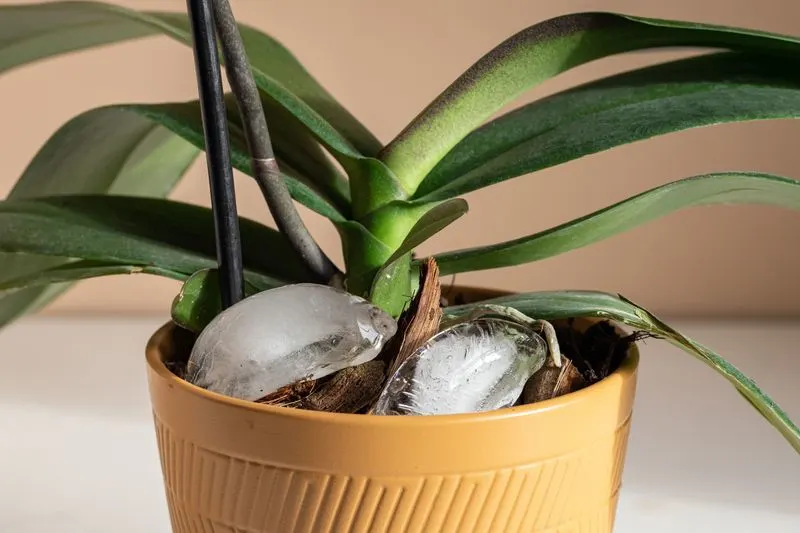
Cold water can shock plant roots, akin to jumping into an icy pool. This shock can stunt growth and stress the plant, affecting its overall health.
Plants prefer lukewarm or room temperature water, which is gentler and more akin to natural rainfall.
To avoid this chilling mistake, fill your watering can and let it sit until it reaches room temperature. This simple adjustment ensures your plants avoid the stress of temperature shock, promoting a more robust and thriving garden.
Watering Leaves Instead of Roots
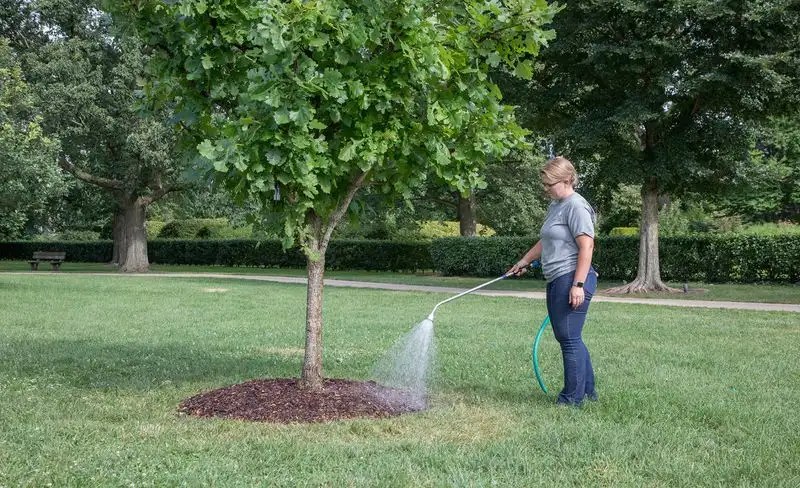
While it might seem logical to water leaves, it’s the roots that need hydration. Leaves can develop spots or mold if constantly wet, while roots, without moisture, can’t absorb nutrients effectively.
Focus your watering efforts at the base of the plant where roots can directly intake the water.
This practice ensures plants receive the hydration they need without risking leaf disease. By aiming for the soil, you help your plant strengthen from the ground up, leading to a healthier and more resilient garden.
Uniform Watering Schedule
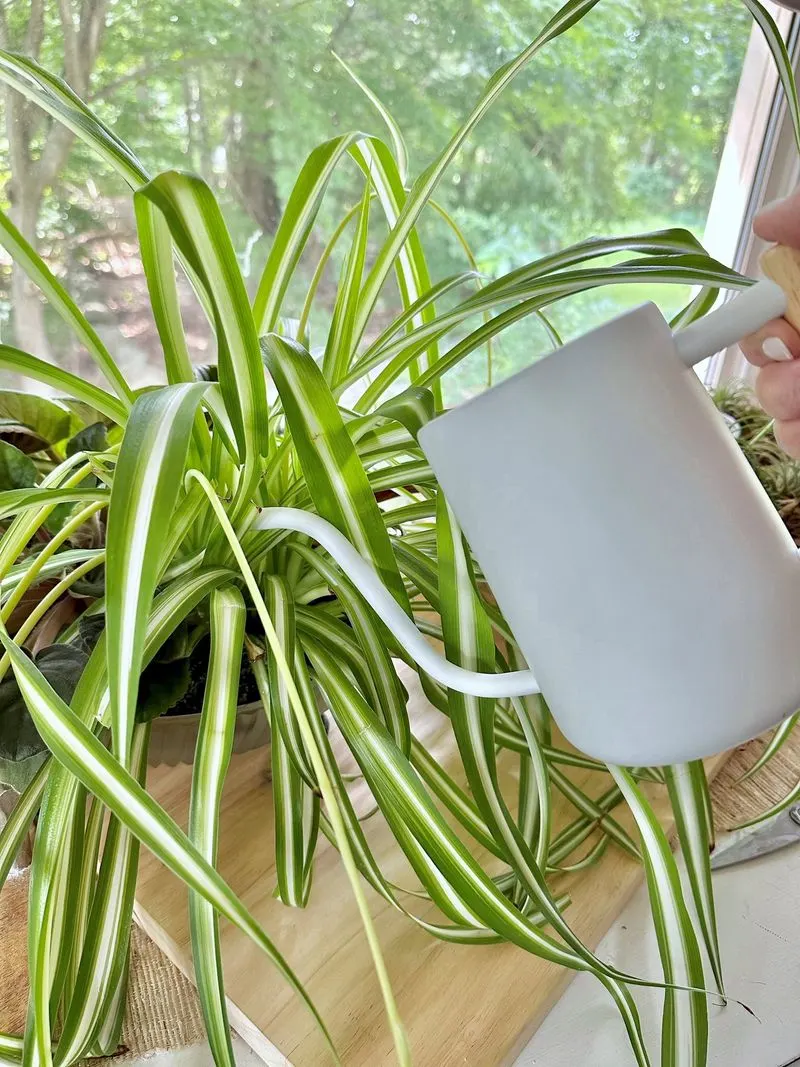
A set schedule might sound efficient, but plants, like people, need flexibility. Weather, humidity, and season affect how much water a plant requires.
Rigidly following a calendar can lead to overwatering in humid conditions or drought during a heatwave.
Instead, check the soil’s moisture level; the top inch should guide your watering needs. This adaptive approach ensures your plants get precise hydration, fostering resilience and growth throughout varying conditions.
Let your plants’ needs dictate the schedule, not the other way around.
Relying on Rainfall
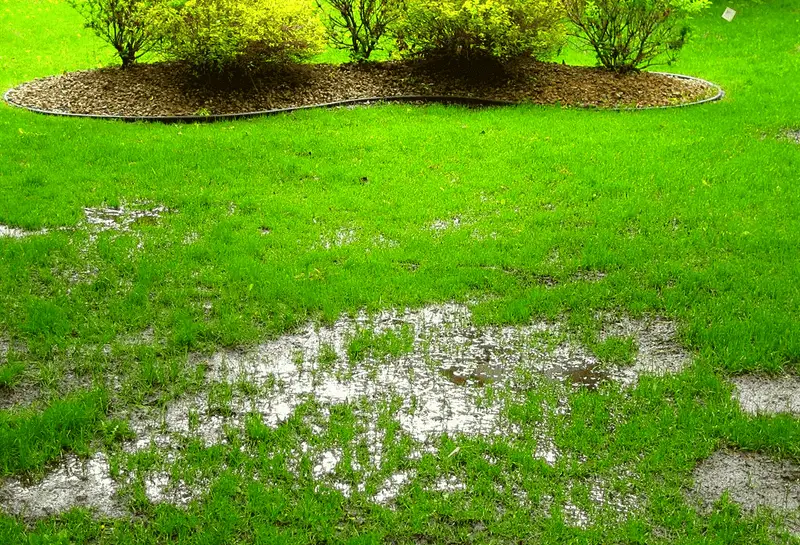
Rainfall may seem like nature’s way of watering, but it’s not always sufficient. Heavy foliage can block rain from reaching the soil, leaving plants thirsty.
Additionally, rain may not evenly distribute across your garden.
Always check the soil moisture, especially after rainfall, to ensure your plants receive adequate water.
By doing so, you’re not just depending on nature but actively participating in your garden’s well-being, ensuring every plant gets the necessary sustenance.
Watering During Peak Sun
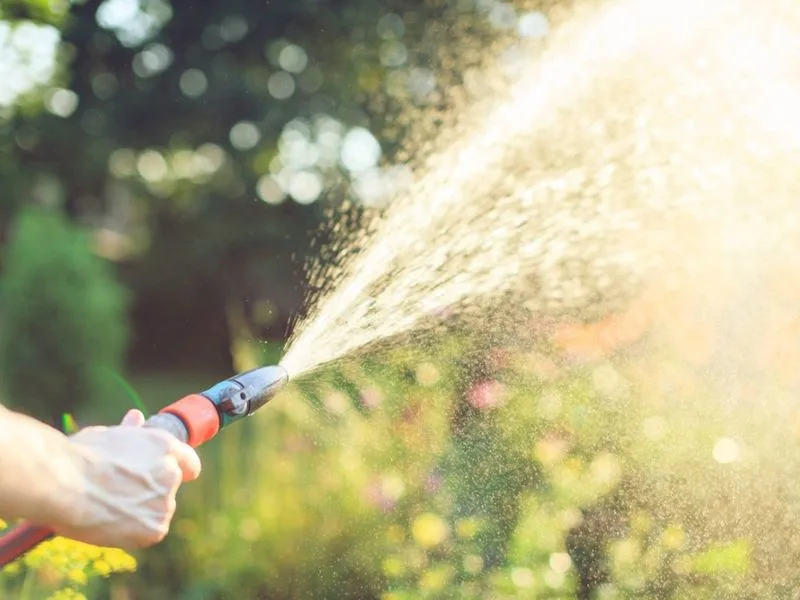
Watering during the hottest part of the day can be counterproductive. The sun quickly evaporates water, leaving little for the plant to absorb.
This not only wastes water but also stresses the plant, which needs hydration to cope with the heat.
To optimize watering, aim for early morning or late afternoon, when evaporation rates are lower.
This timing ensures plants have enough time to absorb water before facing the sun’s intensity, enhancing their resilience and growth.
Neglecting Drainage
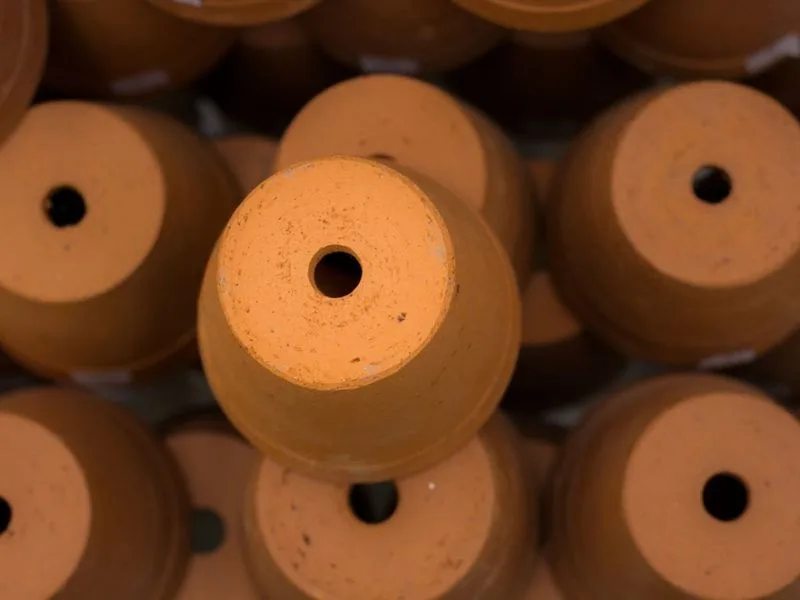
Without proper drainage, water accumulates at the roots, leading to rot. Plants need well-draining soil and pots with holes to allow excess water to escape.
Ignoring drainage is like letting your plant stand in a puddle, suffocating its roots.
Ensure your pots have adequate holes and use soil that promotes drainage.
This setup prevents waterlogging and encourages healthy root development, providing a solid foundation for your plants to thrive.
Assuming All Plants Need the Same Care
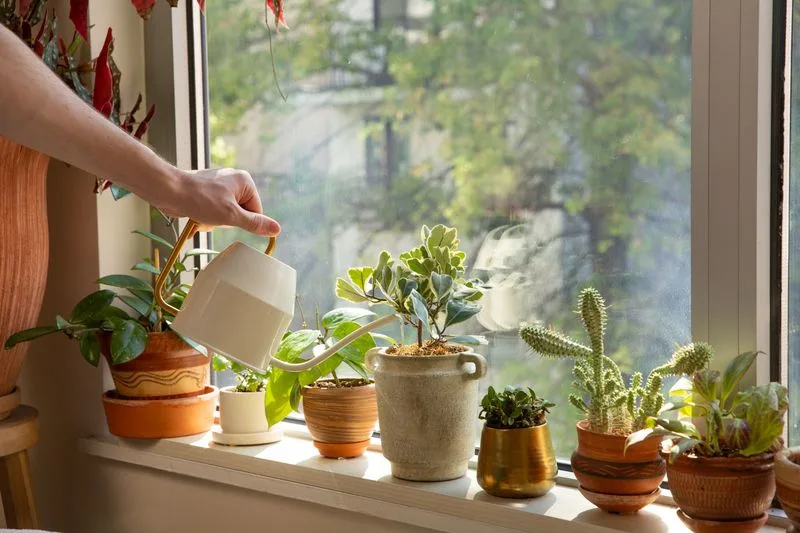
Each plant species has distinct needs, from water and light to soil type. Assuming all require the same care can lead to problems.
A cactus’ minimal water needs vastly differ from a tropical plant’s thirst.
Research each plant’s specific requirements and tailor your care accordingly. This individualized attention fosters healthier plants, as each receives what it truly needs to flourish.
Embrace the diversity of your garden by respecting each plant’s unique nature.
Misting Instead of Deep Watering
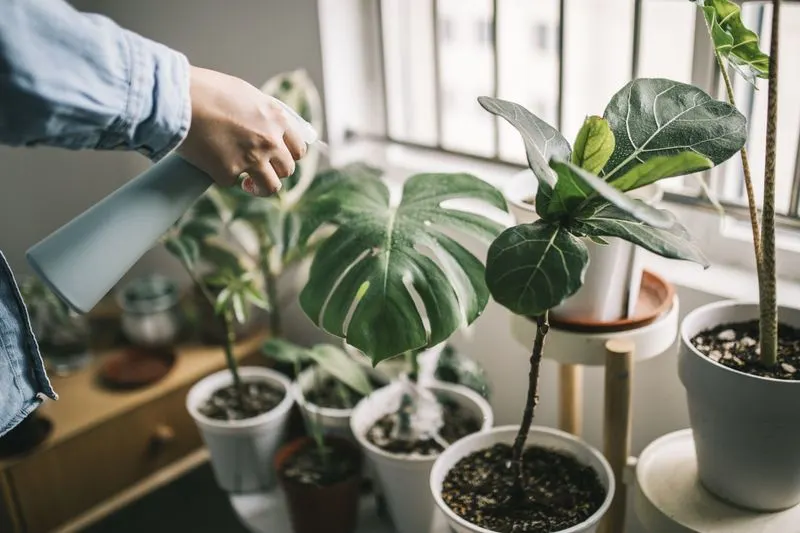
The allure of a gentle misting can be misleading. While it feels like a nurturing act, misting often doesn’t provide enough moisture for the roots. Instead, it can leave the leaves damp, risking mold growth.
True hydration requires deep watering, which ensures moisture reaches the root system. This promotes healthy plant growth and resilience.
Occasional misting is fine for humidity-loving plants, yet it shouldn’t replace proper watering.
Did you know? While tropical plants enjoy humidity, their roots crave water from below, not superficial sprays. Embrace deep watering for thriving flora.
Using Unfiltered Tap Water
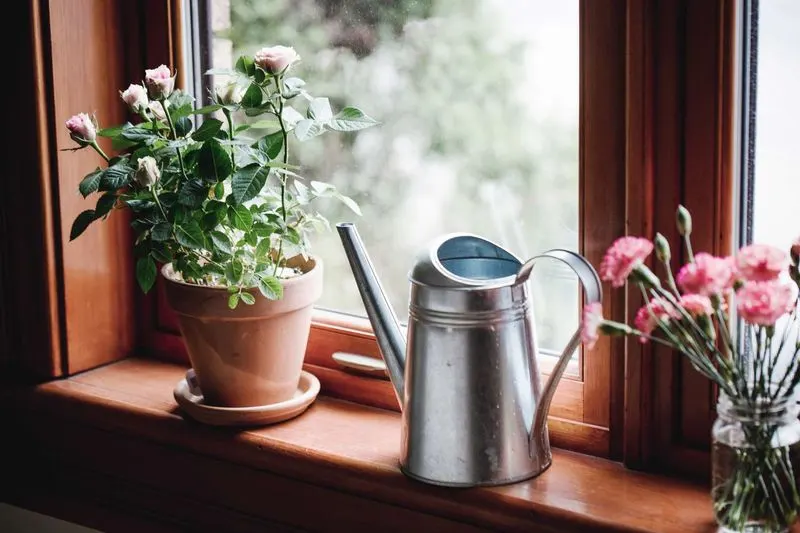
Unfiltered tap water often contains chlorine and other chemicals that plants find inhospitable. These substances can accumulate in the soil, affecting nutrient uptake and leading to leaf burn or stunted growth.
Filtering water removes these harmful elements, offering plants a cleaner, healthier drink. Rainwater collection or distilled water are excellent alternatives to tap water.
Fun fact: Many houseplants, like orchids, thrive when watered with rainwater, which offers a natural balance of nutrients. Consider investing in a simple filtration system to improve your plant care routine.

